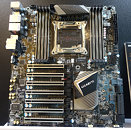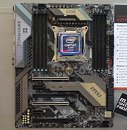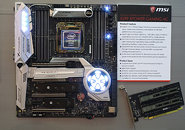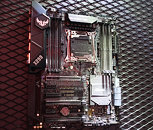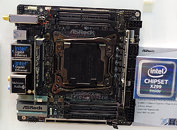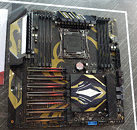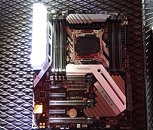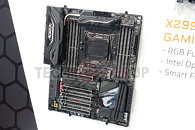
GIGABYTE C422-WS Bridges the Gap Between Core X and Xeon Gold
GIGABYTE showed off the C422-WS, a socket LGA2066 motherboard which supports both client Core i5/i7/i9 X-series and enterprise Xeon Gold and Xeon Platinum processors compatible with socket R4 (a variation of LGA2066). The board supports up to 128 GB of quad-channel memory on Core X processors, and up to 512 GB of DDR4 LRDIMM memory on Xeon chips. It is based on the Intel C422 chipset. The board draws power from 24-pin ATX, two 8-pin EPS, and 6-pin PCIe power connectors. Expansion slots include seven PCI-Express 3.0 x16, of which four are wired to the socket. Storage includes a mix of M.2, U.2, SATA-Express. Networking includes a 10 GbE interface, and a second 1 GbE, both driven by Intel-made controllers. 8-channel HD audio makes for the rest of it.
